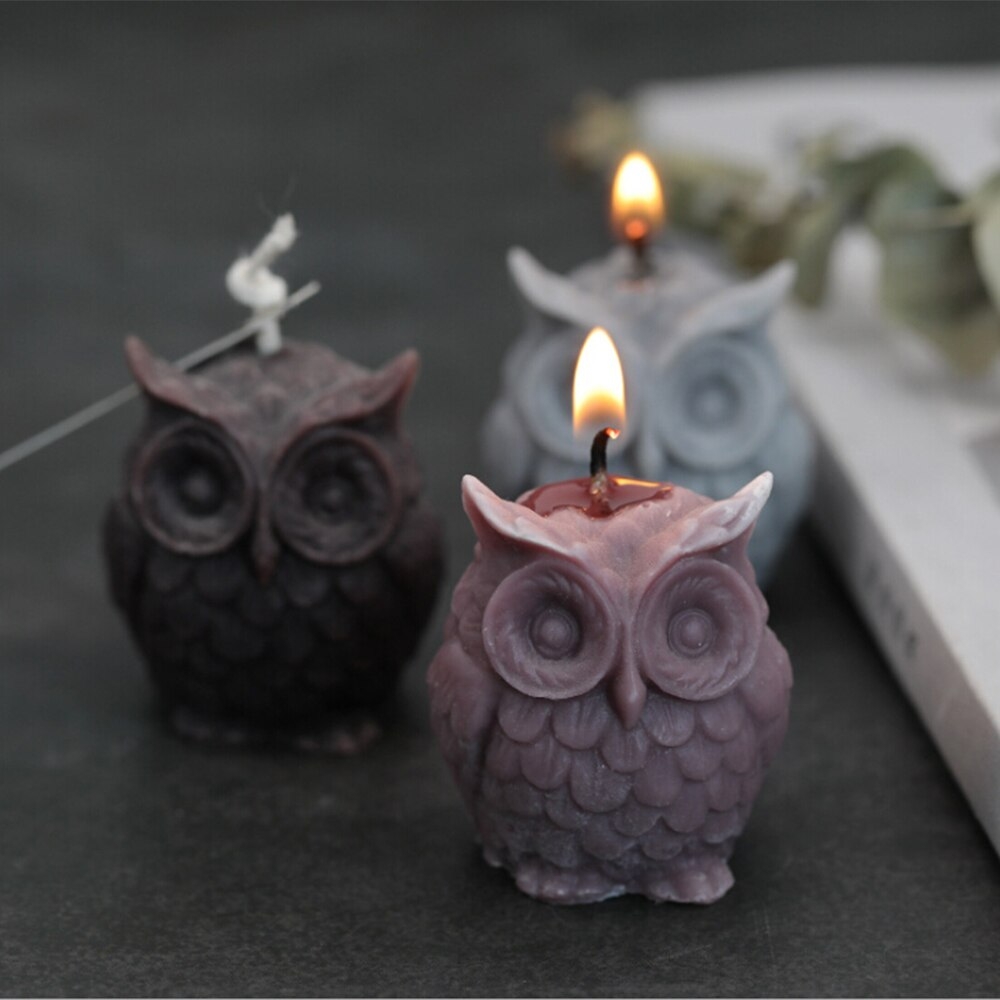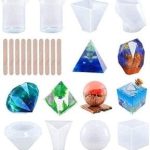Are you looking for the best wicks for making candles? Choosing the right wick is crucial in ensuring that your candles burn properly and efficiently. Whether you are making soy, beeswax, or paraffin candles, selecting the best wicks can make a significant difference in the quality of your finished products.
When it comes to candle making, selecting the right wicks is more than just choosing a piece of string. The type of wick you use can determine how well your candle burns, how much fragrance it releases, and even how long it lasts. In this article, we will explore the different types of wicks available for various candle types and provide tips on how to choose the best wicks for your specific needs.
Understanding the importance of selecting the best wicks for candle making is essential for achieving successful results. Factors such as the diameter of the wick, its burn rate, and the type of wax being used all play a role in choosing the right wick. By considering these factors and exploring different options, you can ensure that you find the perfect wick for your candle making endeavors.
Types of Wicks
When it comes to making candles, choosing the right wick is crucial to the success of your project. Different types of candles require different kinds of wicks in order to achieve optimal burning and fragrance diffusion. In this section, we will explore the various types of wicks available for different candle types, helping you understand which one is best suited for your specific candle making needs.
Cotton Wicks
Cotton wicks are a popular choice for many types of candles due to their efficient and clean-burning qualities. They come in a variety of sizes and are suitable for use with paraffin, soy, and beeswax candles. The key advantage of cotton wicks is their ability to provide a consistent and steady flame, ensuring an even burn throughout the life of the candle.
Wood Wicks
For those looking to add a unique touch to their candles, wood wicks are an excellent option. These wicks create a soothing crackling sound reminiscent of a fireplace when lit, adding an extra ambiance to the candle experience. Wood wicks are best used in soy or beeswax candles as they require softer wax for optimal burning.
Zinc Core Wicks
Zinc core wicks are often used in container candles as they provide stability and rigidity to support the weight and size of the candle. These wicks produce a consistent flame and work well with paraffin wax, offering excellent burn performance. However, it’s important to ensure that zinc core wicks are free from lead content for safety reasons.
By understanding the different types of wicks available for varying candle types, you can make an informed decision on which one would be best suited for your specific candle making project. Consider factors such as burn performance, fragrance throw, and visual appeal when choosing the best wick for making your own candles.
Factors to Consider
When it comes to choosing the best wicks for making candles, there are several factors to consider to ensure that your candles burn efficiently and evenly. The type of wax, size of the candle, and desired burn time all play a role in selecting the right wick for your specific candle-making project.
Wax Type
The type of wax you use for your candles will greatly influence the type of wick you should choose. For soy candles, cotton or cotton-paper blend wicks tend to work best as they can handle the natural vegetable oils present in soy wax.
Beeswax candles, on the other hand, may require a different type of wick due to their high melting point and dense nature. Understanding the properties of different waxes will help you narrow down the best wicks for your specific candle-making needs.
Candle Size
The size of your candle also plays a critical role in determining the best wick to use. Larger candles will require thicker wicks to provide enough heat to melt the wax at an even rate. Smaller candles, on the other hand, may need thinner wicks to prevent them from burning too hot and causing tunneling. Considering the size and diameter of your candles will help you select the most suitable wick for optimal burning.
Burn Time
Another important factor to consider when choosing the best wicks for making candles is burn time. If you want a longer-lasting candle, you’ll need a thicker wick that can hold more fuel (wax) and produce a larger flame. For shorter burn times, a thinner wick will suffice. Understanding how long you want your candle to burn will help inform your decision about which wick will be most effective for your candle-making endeavors.
By taking into account these factors – wax type, candle size, and burn time – you can make informed decisions about which are the best wicks for making candles that meet your specific needs and achieve optimal burning results. Investing time in understanding these factors will ultimately ensure that you create beautiful, well-burning candles every time.
Best Wicks for Soy Candles
When it comes to making soy candles, choosing the right wicks is crucial for achieving a clean and consistent burn. With the growing popularity of soy wax as a natural and eco-friendly option for candle making, it’s important to explore the best wicks for this specific type of wax. Here are some options to consider:
- Cotton Wicks: Cotton wicks are a popular choice for soy candles due to their ability to provide a stable and even burn. They come in various sizes, such as small, medium, and large, allowing you to select the appropriate wick size based on the diameter of your candle.
- Wooden Wicks: Wooden wicks are another excellent option for soy candles, offering a unique aesthetic appeal with their crackling sound when lit. They are known for providing an even melt pool and good fragrance throw, making them a favorite among candle makers.
- Wick Size: When choosing wicks for soy candles, it’s essential to consider the size of your container or mold. Selecting the right wick size ensures that your candle burns evenly without tunneling or soot build-up.
In addition to considering the type and size of wicks, it’s also important to take into account the fragrance load and dye content of your soy candles. High fragrance loads or added dyes may require a larger or differently treated wick to accommodate these components.
Ultimately, finding the best wicks for making soy candles involves experimenting with different options and conducting burn tests to determine which wick provides optimal performance. By carefully considering all these factors, you can successfully find the perfect wicks to complement your soy wax candles for a delightful and enjoyable burning experience.
Best Wicks for Beeswax Candles
Beeswax candles are a popular choice for many candle makers due to their natural and sustainable characteristics. When it comes to choosing the best wicks for beeswax candles, it is important to consider the unique qualities of beeswax as a material. Here are some factors to consider when selecting the right wicks for your beeswax candle making project:
- Wick Size: The size of the wick is crucial in ensuring that the beeswax candle burns evenly and cleanly. A wick that is too small may result in tunneling, while a wick that is too large can cause soot and uneven burning.
- Wick Material: For beeswax candles, cotton wicks are often recommended as they have good burn characteristics and minimal carbon buildup. It is important to avoid wicks with metal cores as they can release harmful substances when burned.
- Wick Testing: Before settling on a specific type of wick for your beeswax candles, it is essential to conduct tests to determine which wick provides the best burn performance. This can involve testing different wick sizes and materials to find the optimal combination for your particular beeswax blend.
When it comes to finding the best wicks for making beeswax candles, there are certain options that are highly recommended by experienced candle makers. Some of the best wicks for beeswax candles include:
- Cotton Core Wicks: These wicks are specially designed for use in natural wax blends such as beeswax. They provide a consistent and steady burn, making them an ideal choice for beeswax candles.
- Braided Square Wicks: These types of wicks are known for their excellent stability and clean burning characteristics. They are often used in beeswax candles to minimize smoking and sooting.
- Hemp Wicks: Hemp wicks are another popular choice for beeswax candles due to their natural properties. They offer a slow, consistent burn and produce minimal debris when lit.
Choosing the right wicks is essential for achieving optimal burning performance in your beeswax candles. By considering factors such as wick size, material, and conducting thorough testing, you can find the best wicks for making beautiful and long-lasting beeswax candles.
Best Wicks for Paraffin Candles
When it comes to making paraffin candles, selecting the best wicks is essential for achieving optimal burning and scent throw. Paraffin wax has unique characteristics that require specific types of wicks to ensure a clean and even burn.
With the wide variety of wick options available, it can be challenging to determine which ones are best suited for paraffin candles. Understanding the different factors to consider when choosing wicks for paraffin wax will help you create high-quality candles that meet your expectations.
One of the key factors to consider when selecting wicks for paraffin candles is the type of fragrance or essential oils you plan to use. Certain scents may require a different wick size or material to achieve the best results. Additionally, the diameter and height of your candle will also impact the type of wick needed. It’s crucial to match the wick size with the size and composition of your candle for optimal burning.
Another important consideration when choosing wicks for paraffin candles is the burn rate. Since paraffin wax typically has a higher melting point compared to other wax types, it’s essential to select a wick that can generate enough heat to consistently melt the wax and release fragrance without causing tunneling or uneven burning. By carefully considering these factors and conducting test burns with different wick options, you can determine which wicks perform best with your specific paraffin candle recipe.
DIY Wicks
Making your own wicks for candle making can be a fun and rewarding DIY project. Not only does it allow you to customize the size and thickness of the wick, but it also gives you the freedom to experiment with different materials to find the best wicks for your specific candle-making needs. Here’s how you can make your own wicks at home.
One of the easiest and most cost-effective ways to make your own candle wicks is by using cotton string or twine. Simply cut the string to the desired length, making sure it is a few inches longer than the height of your candle container. Next, soak the string in a solution of water and borax for a few hours. This will help the string to burn evenly when it’s used as a wick in your candles.
Another option for making DIY candle wicks is to use wooden sticks or skewers as the base. Simply wrap cotton thread tightly around the stick, ensuring that it is straight and secure. Once wrapped, dip the entire stick into melted wax, allowing it to cool and harden before trimming it down to size. This method creates a sturdy and reliable wick for your homemade candles.
Lastly, if you prefer a more natural approach, you can create wicks using hemp or flax fibers. These natural materials are known for their excellent burning properties and can be braided together to form a strong and efficient wick for candle making. Experimenting with different materials and techniques will allow you to find the best wicks for making candles that suit your personal preferences and candle-making goals.
| DIY Wick Materials | Advantages |
|---|---|
| Cotton String/Twine | Cost-effective, customizable size |
| Wooden Sticks/Skewers | Creates sturdy wick base |
| Hemp/Flax Fibers | Natural burning properties |
Testing and Troubleshooting
When it comes to making candles, choosing the right wick is crucial for achieving optimal burning and fragrance diffusion. Testing and troubleshooting wicks is an essential part of the candle-making process to ensure that the final product meets your expectations. Here are some tips for testing and troubleshooting wicks to achieve the best results.
One important factor to consider when testing wicks is the type of wax being used. Different types of wax require different wick sizes and materials for optimal burning. For example, soy wax generally requires a larger size wick compared to paraffin wax. It’s important to test different wick sizes and types with your specific wax to find the best option for your candles.
In addition to considering the type of wax, it’s also important to take into account the diameter of the container in which the candle will be placed. The diameter of the container will influence how well the candle burns, so testing different wick sizes in various container diameters is essential for achieving optimal results.
Furthermore, proper troubleshooting techniques can help identify issues with a particular wick, such as tunneling or smoking. By observing how a candle burns and addressing any issues that arise, you can make necessary adjustments to achieve a clean and efficient burn. Conducting thorough testing and troubleshooting of wicks will ensure that your candles burn evenly and release their intended fragrance effectively.
| Wax Type | Recommended Wick Type |
|---|---|
| Soy Wax | Cotton or hemp wicks are commonly recommended for soy candles due to their ability to burn cleanly |
| Beeswax | Braided cotton or paper core wicks work well with beeswax as they provide a stable flame |
| Paraffin Wax | Zinc core or cotton-braided wicks are often used for paraffin candles due to their ability to minimize smoking |
Conclusion
In conclusion, the success of your candle making venture heavily relies on choosing the best wicks for your specific type of candle. As we have explored in this article, different types of candles require different wicks to achieve optimal burning and scent dispersion. Whether you are making soy candles, beeswax candles, or paraffin candles, it is crucial to consider the factors that affect wick performance such as diameter, material, and burn rate.
When searching for the best wicks for making candles, it is important to consider the type of wax you are using. For soy candles, cotton wicks with a larger diameter are often recommended to accommodate the lower melting point of soy wax. Beeswax candles tend to perform best with braided cotton wicks due to their natural properties. Paraffin candles may benefit from coreless wicks for cleaner burning.
Furthermore, understanding how to troubleshoot and test your wick choices is essential for achieving optimal burning and ensuring a satisfying end product. By following the tips provided in this article for testing and troubleshooting wicks, you can better gauge which wick will work best for your specific candle making needs. Ultimately, taking the time to carefully select and test various wicks will undoubtedly lead to a more successful and enjoyable candle making process.
Frequently Asked Questions
What Type of Wick Is Best for Candles?
The best type of wick for candles is usually made of cotton, as it burns consistently and doesn’t produce a lot of soot. It’s important to choose the right thickness of wick for the specific candle you’re making.
What Is the Best Thing to Use as a Candle Wick?
The best thing to use as a candle wick is typically cotton wicking because it is easily accessible, affordable, and burns cleanly. However, some people also use wood or hemp wicks for different effects.
Is Cotton or Hemp Wick Better for Candles?
When it comes to choosing between cotton and hemp wick for candles, it really depends on personal preference and the desired outcome. Cotton wicks are popular for their consistent burn, while hemp wicks are known for producing a slightly larger flame and being more rigid in structure.
Both have their own benefits, so it’s a matter of experimenting to see which one works best for your specific candle-making needs.

Welcome to my candle making blog! In this blog, I will be sharing my tips and tricks for making candles. I will also be sharing some of my favorite recipes.





